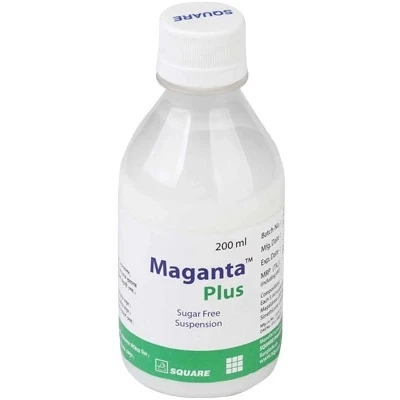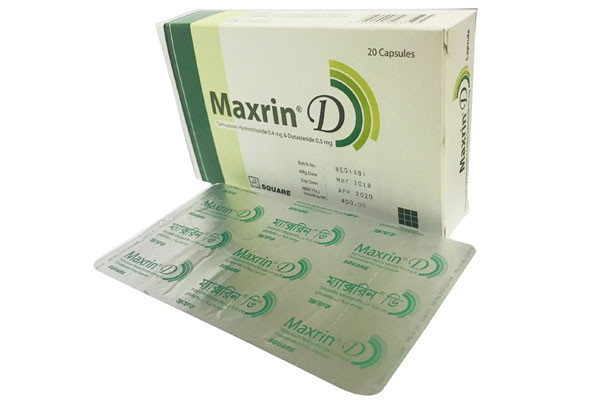

Neurolep Syrup 100ml, Piracetam 500 mg/5 ml
Inhouse product
-
৳11.40
৳12.00 -
৳42.75
৳45.00 -
৳16.63
৳17.50 -
৳2.14
৳2.25
Reviews & Ratings
Indications
Cerebral vascular
accidents and cerebral insufficiencies: Ischaemic or even hemorrhagic acute accidents, chronic
manifestations of the above accidents or of cerebral atherosclerosis.
Mental retardation in
children: Ease of resuming
individual contact, sociability and learning, improved intellectual
performances and school results.
Behavior and psychotic
problems in old age: Memory deficits,
particularly with regard to fixation and evocation asthenia adaption disorders,
disturbed psychomotor reactions.
* রেজিস্টার্ড চিকিৎসকের পরামর্শ মোতাবেক ঔষধ সেবন করুন'
Pharmacology
Piracetam is a
'nootrope', that is to say, it is a psychotropic agent which acts directly on
the brain to improve the efficacy of the telencephalon in both normal subjects
and those suffering from some functional deficit. This area of the brain is
involved in cognition and also has a role to play in learning and memory, in
alertness and in consciousness. Piracetam does not produce either sedation or
stimulation. Piracetam can act on the central nervous system in a variety of
ways. It will modify neurotransmission within the brain, and can help to
improve the metabolic environment essential for good neuronal function. It is
also a haemorrheological agent and can improve microcirculation without
producing vasodialation. When given as acute or long term treatment for patients'
suffering from a functional CNS deficit, it will heighten alertness and
increase cognitive function. This changes can seen as a significant increase in
the a-and b-activity, with a reduction in d-activity on an EEG trace. Piracetam
will protect and restore cognitive functional capacity for cerebral trauma,
e.g. hypoxia or intoxication, and after electroshock therapy. Piracetam may be
given alone or together with other drugs when treating myoclonia due to anoxia.
It will reduce the duration of vestibular nystagamus. Piracetam will also
improve regional oxygen and glucose uptake in the brain in patients suffering
from dementia subsequent to multiple infarcts, or in those with cerebral
ischaemia. Piracetam will inhibit the increased aggregation of activated
platelets and, in conditions where there is abnormal rigidity of the RBC, it
can restore deformability and the ability to pass through the microvasculature.
Dosage & Administration
Adults:
- In
cerebrocortical insufficiency disorders:
the usual dose is 800 mg 3 times a day.
- In myoclonic
seizures: a dose of 7.2 gm daily,
increasing by 4.8 gm per day every 3 to 4 days up to a maximum of 20 gm
daily, given in 2 or 3 divided doses.
Children: The daily
dosage depends on the weight of the child, 50 mg/kg of body weight in 3 divided
doses. Once the desired results have been obtained, reduce the initial dose by
half.
* রেজিস্টার্ড চিকিৎসকের পরামর্শ মোতাবেক ঔষধ সেবন করুন'
Interaction
In a single case,
confusion, irritability and sleep disorders were reported in concomitant use
with thyroid extract. At present, no interaction has been observed with the
following anti-epileptic drugs, clonazepam, carbamazepine, phenyton,
phenobarbitone and sodium valporate, based on a small number of studies.
Contraindications
Piracetam is
contra-indicated in patients with severe renal insufficiency (creatinine
clearance < 20 ml/min) and hepatic impairment. As the principal route of
elimination for Piracetam is via the kidney, special care must be taken when
treating patients known to suffer from renal insufficiency. Monitoring of renal
function is recommended in such cases. The increase in half-life is directly
related to the decrease in renal function and creatinine clearance. This is
also true for the older patient in whom creatinine clearance is dependent on
age. When the creatinine clearance is <60 ml/min, or serum creatinine is
>1.25 mg/100 ml, the dosage prescribed should be calculated as follows:
- CrCl 60-40 ml/min: Dosage
should be 1/2 of normal dose
- CrCl 40-20 ml/min: Dosage
should be 1/4 of normal dose
Side Effects
The side effects
reported include nervousness, agitation, irritability, anxiety and sleep
disturbances. The incidence of these during clinical trials was ( 5% ) and they
were more often noted in the older patients taking > 2.4 gm daily. In the
majority of cases, a dose reduction sufficed to make these symptoms disappear.
Some patients may complain of fatigue or drowsiness, gastrointestinal problems,
e.g. nausea, vomiting, diarrhoea and stomachache have also been reported but
their incidence during clinical trials was ≤ 2%. Other symptoms e.g. vertigo,
headaches, trembling and sexual stimulation have occasionally been reported.
Overdose: Neurolep appears to be devoid of toxicity even at very high doses
and, therefore, the need for specific measures to be taken in case of an
overdose is avoided. Drug Interactions: In a single case, confusion,
irritability and sleep disorders were reported in concomitant use with thyroid
extract. At present, no interaction has been observed with the following
anti-epileptic drugs, clonazepam, carbamazepine, phenyton, phenobarbitone and
sodium valporate, based on a small number of studies.
Pregnancy & Lactation
Piracetam should not
be prescribed during pregnancy or when breast feeding, except under exceptional
circumstances. Piracetam is able to cross the placenta.
Therapeutic Class
Adjunct anti-epileptic
drugs, Drugs used in tremor, tics & related disorder
Storage Conditions
Store in a cool and
dry place at a temperature below 30˚C, Keep away from sunlight. Keep out of the
reach of children.
Frequently Bought Products
Ezevent Tablet, Montelukast Sodium 10 mg
Dexonex Tablet, Dexamethasone 0.5 mg
Caripa Syrup, Carica Papaya Leaf Extract 275 mg/5 ml, 200ml
Rectocare Ointment 15gm, Nitroglycerin 0.4%
Product Queries (0)
Login Or Registerto submit your questions to seller
Other Questions
No none asked to seller yet
-
৳11.40
৳12.00 -
৳42.75
৳45.00 -
৳16.63
৳17.50 -
৳2.14
৳2.25

















